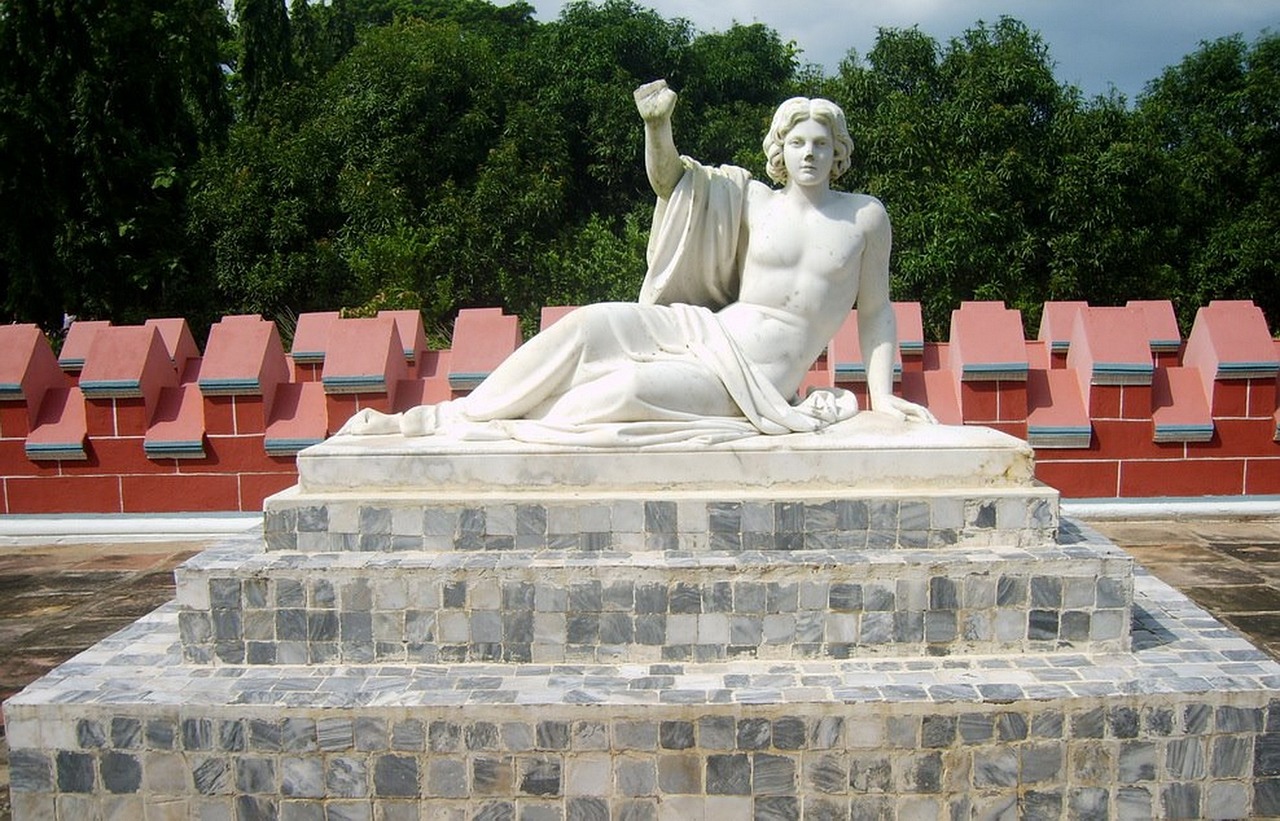This article delves into the rich history of Bengali poetry, tracing its evolution and examining its profound influence on Indian literature and culture. Explore the key figures and movements that have shaped this vibrant literary tradition.
Origins of Bengali Poetry
Bengali poetry has its roots deeply embedded in the cultural and historical tapestry of Bengal. It began to flourish during the medieval period, influenced by the Sufi tradition and the Bhakti movement, which emphasized devotion and personal connection to the divine. Early poets like Chandidas and Jayadeva laid the groundwork for what would become a rich literary tradition.
Key Historical Movements
Throughout its history, Bengali poetry has undergone several significant movements. Each movement brought about a transformation in themes and styles:
- The Romantic Era: This era marked a shift towards emotion and nature, with poets like Rabindranath Tagore leading the way.
- Influence of Western Literature: The introduction of Western literary forms during the Romantic Era influenced Bengali poets, integrating new ideas into traditional forms.
- Emergence of Modernism: Modernist poets introduced innovative techniques and themes, reshaping the landscape of Bengali poetry.
Women Poets in Bengali Literature
Women have played a crucial role in shaping Bengali poetry, offering unique perspectives and voices. Poets like Kamala Das and Sukanta Bhattacharya have made significant contributions, enriching the literary tradition.
Prominent Bengali Poets
Several poets have left an indelible mark on Bengali literature:
- Rabindranath Tagore: The first non-European Nobel laureate, Tagore revolutionized Bengali poetry with his profound themes and lyrical beauty.
- Kazi Nazrul Islam: Known as the Rebel Poet, Nazrul infused Bengali poetry with themes of resistance and social justice.
Impact on Indian Literature
Bengali poetry has significantly influenced Indian literature as a whole, inspiring writers across various languages and genres. Its themes of love, nature, and social justice resonate widely.
Contemporary Bengali Poetry
Modern Bengali poetry continues to evolve, reflecting contemporary issues and themes. Current poets are pushing boundaries and exploring new forms, ensuring the tradition remains vibrant.
Conclusion: The Enduring Legacy of Bengali Poetry
The legacy of Bengali poetry is profound, with its themes and styles continuing to resonate today. It holds a significant place in both regional and national contexts, influencing generations of writers and poets.

Origins of Bengali Poetry
Bengali poetry, a vibrant and dynamic literary form, has its origins deeply intertwined with the historical and cultural evolution of the Bengal region. This poetic tradition began to flourish in the medieval period, influenced by various linguistic and cultural exchanges that shaped the Bengali language and its literary expression.
The roots of Bengali poetry can be traced back to the Charyapada, a collection of mystical songs composed by 8th to 12th-century Buddhist poets. These early works were primarily written in Old Bengali and laid the groundwork for future poetic expressions. The themes often revolved around spirituality, love, and the human experience, reflecting the socio-cultural milieu of the time.
As we move into the 15th century, the influence of Vaishnavism began to permeate Bengali literature. Poets like Chandidas and Jayadeva emerged, using their verses to explore themes of devotion and the divine. Their works not only enriched the poetic landscape but also inspired a sense of cultural identity among the Bengali people.
In the 19th century, the advent of the Renaissance in Bengal marked a transformative period for poetry. This era saw the emergence of poets such as Rabindranath Tagore, who would later become the first non-European Nobel laureate in Literature. Tagore’s innovative use of language and exploration of diverse themes revolutionized Bengali poetry, bridging traditional and modern styles.
Furthermore, the influence of Western literature during this time introduced new forms and ideas, encouraging poets to experiment with structure and content. This blend of traditional and contemporary elements created a rich tapestry of poetic expression that continues to resonate today.
In conclusion, the reflect a complex interplay of cultural, spiritual, and linguistic developments. The early poets established a strong foundation, paving the way for future generations to explore and expand this beloved literary tradition.

Key Historical Movements
Throughout the rich tapestry of Bengali poetry, several significant movements have emerged, each leaving an indelible mark on its evolution. These movements not only shaped the poetic landscape of Bengal but also influenced broader literary trends across India. Below, we explore some of the most pivotal movements that transformed Bengali poetry.
- The Romantic Era: This movement, which blossomed in the late 19th century, emphasized emotion, nature, and individualism. Poets like Rabindranath Tagore and Jatindranath Sengupta sought inspiration from the beauty of the natural world and the depths of human emotion, crafting verses that resonate with readers even today.
- Modernism: Emerging in the early 20th century, the Modernist movement introduced innovative techniques and themes. Poets such as Jibanananda Das and Shakti Chattopadhyay broke away from traditional forms, experimenting with free verse and abstract imagery, thereby redefining the boundaries of Bengali poetry.
- Post-Modernism: In the late 20th century, Post-Modernism challenged established norms and embraced a diverse range of voices. This era saw poets like Subhash Mukhopadhyay and Debi Priya Bandyopadhyay exploring identity, gender, and existential themes, enriching the poetic discourse in Bengal.
- Feminist Poetry: The rise of feminist consciousness in the late 20th century brought forth a wave of female poets who articulated their experiences and perspectives. Writers such as Kamala Das and Alokita Dutta highlighted issues of gender inequality and societal expectations, making significant contributions to the literary landscape.
Each of these movements has played a crucial role in shaping the trajectory of Bengali poetry. By pushing boundaries and exploring new themes, poets have created a dynamic and evolving literary tradition that continues to inspire future generations.
The Romantic Era
in Bengali poetry represents a monumental transformation that shifted the focus from conventional themes to a profound exploration of emotion and nature. This period, which blossomed in the late 19th and early 20th centuries, saw poets embracing the beauty of the natural world and the depths of human feelings, leading to a rich tapestry of poetic expression.
One of the most significant figures of this era is Rabindranath Tagore, whose works exemplified the Romantic ethos. Tagore’s poetry often reflects a deep connection to nature, portraying landscapes that evoke a sense of serenity and introspection. His poems, such as “Gitanjali,” not only celebrate the beauty of the world around us but also delve into the complexities of the human spirit.
During this time, poets began to draw inspiration from Western literary movements, incorporating new forms and styles that enriched their work. The influence of Romanticism from Europe encouraged Bengali poets to express their innermost thoughts and feelings with greater intensity. This fusion of Eastern and Western literary traditions led to a unique poetic voice that resonated with readers across cultures.
Moreover, the Romantic Era also paved the way for the emergence of modern themes in Bengali poetry. Poets started addressing social issues, personal struggles, and the quest for identity, reflecting the changing dynamics of society. This shift not only expanded the scope of poetry but also made it a powerful medium for social commentary.
In summary, the Romantic Era in Bengali poetry was a time of innovation and exploration. It laid the groundwork for future generations of poets, inspiring them to continue pushing the boundaries of poetic expression. The legacies of this period continue to influence contemporary Bengali literature, making it a vital part of India’s rich cultural heritage.
Influence of Western Literature
The Influence of Western Literature
The Romantic Era marked a transformative period in Bengali poetry, as the infusion of Western literary forms brought a wave of new ideas and inspirations. This integration significantly reshaped the traditional landscape of Bengali poetry, allowing poets to explore themes of emotion, nature, and individualism in ways that had not been previously articulated.
During this era, poets like Rabindranath Tagore and Kazi Nazrul Islam began to adopt Western styles and techniques, such as lyricism and free verse, which were instrumental in expressing the complexities of human experience. The influence of Romanticism introduced a focus on personal feelings and a deep appreciation for the beauty of nature, which became prevalent in their works.
Moreover, the introduction of new poetic forms enabled Bengali poets to experiment with structure and rhythm. For instance, Tagore’s use of the song format blended traditional Bengali music with Western poetic rhythms, creating a unique fusion that resonated with audiences. This synthesis not only enriched the poetic tradition but also made it more accessible to the common people.
As these poets began to incorporate Western influences, they did not abandon their roots. Instead, they created a dialogue between traditions, allowing for a vibrant exchange of ideas. The result was a distinct style that maintained the essence of Bengali culture while embracing new literary trends.
In conclusion, the influence of Western literature during the Romantic Era was pivotal in the evolution of Bengali poetry. It allowed poets to explore new dimensions of creativity and expression, ultimately leading to a rich and diverse literary tradition that continues to inspire contemporary writers.
Emergence of Modernism
The Modernist movement in Bengali poetry marked a transformative period that introduced innovative techniques and fresh themes, reshaping the landscape of literary expression. This evolution was characterized by a departure from traditional forms and a quest for new ways to articulate the complexities of human experience.
During the early 20th century, poets like Jibanananda Das, Sudhindranath Dutta, and Kazi Nazrul Islam emerged as pivotal figures in this movement. They embraced free verse, fragmented structures, and modernist themes that reflected the sociopolitical changes of the time. These poets sought to capture the essence of contemporary life, often delving into themes of existentialism, urbanization, and individualism.
| Poet | Contribution | Notable Works |
|---|---|---|
| Jibanananda Das | Introduced nature imagery and introspective themes. | Banalata Sen, Asamapt |
| Sudhindranath Dutta | Explored modernist themes and urban life. | Shabda, Chhaya |
| Kazi Nazrul Islam | Infused poetry with themes of rebellion and social justice. | Bidrohi, Rajani |
These poets not only redefined the aesthetic of Bengali poetry but also influenced future generations. Their works often challenge societal norms and provoke thought, making them relevant even today. The Modernist ethos continues to inspire contemporary poets, who draw upon the legacy of their predecessors while addressing current issues.
In conclusion, the emergence of Modernism in Bengali poetry was not merely a stylistic shift; it represented a profound change in how poets engaged with the world around them. The contributions of these key figures have left an indelible mark on the genre, ensuring that Bengali poetry remains a vibrant and evolving art form.
Women Poets in Bengali Literature
Bengali poetry has been profoundly enriched by the contributions of women poets, who have brought forth unique perspectives and voices that resonate through the ages. Their works not only reflect personal experiences but also address broader social issues, making significant impacts on the literary landscape of Bengal.
Historically, women in Bengali literature faced numerous challenges, yet many emerged as powerful voices. Figures such as Kamini Roy, one of the first female poets in Bengali literature, broke barriers with her poignant verses that often celebrated women’s rights and empowerment. Her works are a testament to the resilience and strength of women in a patriarchal society.
Another notable poet is Binodini Dasi, who used her poetry to challenge societal norms and advocate for women’s education and independence. Her writings not only enriched Bengali literature but also inspired future generations of female writers to express their thoughts and emotions freely.
The contributions of contemporary poets like Sharmila Ray and Ananya Mukherjee further illustrate the evolving role of women in Bengali poetry. They explore themes of identity, love, and social justice, providing fresh insights into the complexities of modern life. Their works often bridge traditional and contemporary styles, reflecting the ongoing evolution of Bengali literature.
Moreover, the rise of literary festivals and platforms dedicated to women’s writing has fostered a supportive community for female poets. This environment encourages collaboration and visibility, allowing their voices to reach wider audiences.
In conclusion, the role of women poets in Bengali literature is not just significant; it is transformative. Their contributions have shaped the poetic tradition and continue to inspire both readers and writers alike. As we celebrate their achievements, it is essential to recognize the ongoing journey of women in literature and the vital narratives they bring to the forefront of Bengali poetry.

Prominent Bengali Poets
Bengali literature boasts a rich tapestry of poetic voices that have profoundly shaped its cultural landscape. This section highlights some of the most influential poets in Bengali literature, whose works continue to resonate with readers today.
- Rabindranath Tagore: As the first non-European Nobel laureate in Literature, Tagore’s contributions to Bengali poetry are unparalleled. His works, such as Gitanjali, emphasize themes of love, nature, and spirituality. Tagore’s unique ability to blend traditional forms with modern sensibilities has left a lasting legacy in both Bengali and world literature.
- Kazi Nazrul Islam: Known as the Rebel Poet, Nazrul infused Bengali poetry with a spirit of resistance and social justice. His poems often reflect themes of revolution and equality, making him a pivotal figure in the fight for independence. Works like Bhangar Gaan and Kandari Hushiar showcase his powerful voice against oppression.
- Jibanananda Das: Often regarded as one of the greatest modern Bengali poets, Das’s works delve into the intricacies of human emotion and nature. His poem Bidrohi (The Rebel) exemplifies his deep connection to the natural world and existential themes, establishing him as a leading figure in the modernist movement.
- Sukanta Bhattacharya: A prodigious talent, Sukanta’s poetry reflects the struggles of the common man and the socio-political climate of his time. His poignant poems, such as Amar Kheya, explore themes of poverty and hope, making his work resonate with readers seeking social change.
- Shakti Chattopadhyay: Renowned for his bold and innovative style, Chattopadhyay’s poetry often challenges societal norms and conventions. His collections, like Shakti’s Poems, are celebrated for their emotional depth and exploration of identity.
These poets not only contributed to the richness of Bengali literature but also influenced the broader Indian literary landscape. Their works continue to inspire new generations of writers and readers, ensuring the enduring legacy of Bengali poetry.
Rabindranath Tagore
, a towering figure in Bengali literature, was not only the first non-European to win the Nobel Prize in Literature in 1913 but also a pioneer who transformed the landscape of Bengali poetry. His contributions extend beyond poetry, encompassing music, art, and philosophy, making him a multifaceted cultural icon.
Born on May 7, 1861, in Kolkata, India, Tagore was immersed in a rich cultural environment from a young age. His family was deeply involved in the arts, which fostered his creative spirit. Tagore’s early exposure to literature and music significantly influenced his later works, leading him to create a unique blend of lyrical poetry and philosophical thought.
One of Tagore’s most significant contributions is his collection of poems titled “Gitanjali”, which translates to “Song Offerings.” This work, characterized by its spiritual depth and lyrical beauty, played a crucial role in introducing Bengali poetry to the global audience. The themes of love, nature, and the divine are intricately woven into his verses, resonating with readers across cultures.
Tagore’s influence on Bengali poetry is profound; he not only inspired his contemporaries but also laid the groundwork for future generations of poets. His ability to articulate complex emotions and philosophical ideas in a simple yet profound manner has left an indelible mark on literature. His works, such as “The Gardener” and “Fruit-Gathering”, showcase his innovative use of language and form.
Moreover, Tagore’s legacy extends beyond poetry. He was a social reformer who advocated for education, women’s rights, and national independence. His vision of a united India and his emphasis on cultural exchange continue to inspire movements for social justice and equality today.
In conclusion, Rabindranath Tagore’s contributions to Bengali poetry and literature are unparalleled. His ability to bridge the gap between Eastern and Western literary traditions has solidified his place as a universal poet. As we explore his life and works, we recognize his lasting influence on both Bengali and world literature.
Kazi Nazrul Islam
, often referred to as the Rebel Poet of Bengal, holds a significant place in the pantheon of Bengali literature. His works resonate with themes of resistance, social justice, and human dignity, making him a pivotal figure in the cultural landscape of India.
Born on May 24, 1899, in Churulia, Bengal, Nazrul’s poetry emerged during a time of political turmoil and social upheaval in India. His writings became a voice for the oppressed, advocating for freedom and equality. He was not only a poet but also a musician and a revolutionary, using his art to challenge the status quo and inspire change.
| Key Themes in Nazrul’s Poetry | Description |
|---|---|
| Resistance | His poems often reflect a strong spirit of rebellion against oppression and injustice. |
| Love | Many of his works explore the complexities of love and human relationships. |
| Nationalism | He infused his poetry with a sense of national pride and a call for unity among Indians. |
One of his most famous works, “Bidrohi” (The Rebel), encapsulates his fiery spirit and defiance against tyranny. This poem, written in 1921, became an anthem for many who sought freedom from colonial rule. His unique style blended traditional Bengali forms with modern themes, creating a new poetic language that spoke to the hearts of many.
Additionally, Nazrul’s influence extended beyond poetry; he composed numerous songs that are still cherished today. His music, often infused with revolutionary fervor, became an integral part of the Bengali cultural identity.
In conclusion, Kazi Nazrul Islam’s legacy as the Rebel Poet endures, inspiring generations with his unwavering commitment to justice and equality. His works continue to resonate, reminding us of the power of art as a tool for change.
Rebel Poet,
The Secret History of Bengali Poetry and Its Impact on India
This article explores the rich history of Bengali poetry, its evolution, and its profound influence on Indian literature and culture. Discover the key figures and movements that shaped this vibrant literary tradition.
Origins of Bengali Poetry
Bengali poetry has deep roots in the region’s history, influenced by various cultural and linguistic developments. This section delves into its beginnings and the early poets who laid the foundation.
Key Historical Movements
Throughout history, several movements have significantly impacted Bengali poetry. This section examines the major literary movements that transformed the poetic landscape in Bengal.
- The Romantic Era: The Romantic Era marked a significant shift in Bengali poetry, emphasizing emotion and nature. Here, we explore how poets like Rabindranath Tagore embraced these themes to create lasting works.
- Influence of Western Literature: The introduction of Western literary forms during the Romantic Era influenced Bengali poets. This subsection discusses how these new ideas were integrated into traditional Bengali poetry.
- Emergence of Modernism: Modernism brought about innovative techniques and themes in Bengali poetry. This section highlights the poets who spearheaded this movement and their contributions to the genre.
Women Poets in Bengali Literature
Women have played a crucial role in shaping Bengali poetry. This section recognizes the contributions of female poets and their unique perspectives within the literary tradition.
Prominent Bengali Poets
Several poets have left an indelible mark on Bengali literature. This section provides an overview of the most influential figures and their key works that resonate with readers today.
- Rabindranath Tagore: Rabindranath Tagore, the first non-European Nobel laureate, revolutionized Bengali poetry. This subsection explores his life, major works, and lasting influence on both Bengali and world literature.
- Kazi Nazrul Islam: Kazi Nazrul Islam, known as the Rebel Poet, infused Bengali poetry with themes of resistance and social justice. This section discusses his impact on literature and culture.
Impact on Indian Literature
Bengali poetry has significantly influenced Indian literature as a whole. This section examines how Bengali poets have inspired writers across various Indian languages and genres.
Contemporary Bengali Poetry
Modern Bengali poetry continues to evolve, reflecting contemporary issues and themes. This section highlights current poets and their contributions to the ongoing literary tradition.
Conclusion: The Enduring Legacy of Bengali Poetry
The legacy of Bengali poetry is profound, with its themes and styles continuing to resonate today. This conclusion reflects on its importance in both regional and national contexts.
infused Bengali poetry with themes of resistance and social justice. This section discusses his impact on literature and culture.
The Secret History of Bengali Poetry and Its Impact on India
This article explores the rich history of Bengali poetry, its evolution, and its profound influence on Indian literature and culture. Discover the key figures and movements that shaped this vibrant literary tradition.
Origins of Bengali Poetry
Bengali poetry has deep roots in the region’s history, influenced by various cultural and linguistic developments. This section delves into its beginnings and the early poets who laid the foundation.
Key Historical Movements
Throughout history, several movements have significantly impacted Bengali poetry. This section examines the major literary movements that transformed the poetic landscape in Bengal.
- The Romantic Era: The Romantic Era marked a significant shift in Bengali poetry, emphasizing emotion and nature. Here, we explore how poets like Rabindranath Tagore embraced these themes to create lasting works.
- Influence of Western Literature: The introduction of Western literary forms during the Romantic Era influenced Bengali poets. This subsection discusses how these new ideas were integrated into traditional Bengali poetry.
- Emergence of Modernism: Modernism brought about innovative techniques and themes in Bengali poetry. This section highlights the poets who spearheaded this movement and their contributions to the genre.
Women Poets in Bengali Literature
Women have played a crucial role in shaping Bengali poetry. This section recognizes the contributions of female poets and their unique perspectives within the literary tradition.
Prominent Bengali Poets
Several poets have left an indelible mark on Bengali literature. This section provides an overview of the most influential figures and their key works that resonate with readers today.
- Rabindranath Tagore: Rabindranath Tagore, the first non-European Nobel laureate, revolutionized Bengali poetry. This subsection explores his life, major works, and lasting influence on both Bengali and world literature.
- Kazi Nazrul Islam: Kazi Nazrul Islam, known as the Rebel Poet, infused Bengali poetry with themes of resistance and social justice. This section discusses his impact on literature and culture.
Impact on Indian Literature
Bengali poetry has significantly influenced Indian literature as a whole. This section examines how Bengali poets have inspired writers across various Indian languages and genres.
Contemporary Bengali Poetry
Modern Bengali poetry continues to evolve, reflecting contemporary issues and themes. This section highlights current poets and their contributions to the ongoing literary tradition.
Conclusion: The Enduring Legacy of Bengali Poetry
The legacy of Bengali poetry is profound, with its themes and styles continuing to resonate today. This conclusion reflects on its importance in both regional and national contexts.
Impact on Indian Literature
Bengali poetry has played a pivotal role in shaping the landscape of Indian literature. Its rich tradition, marked by profound emotional depth and cultural reflection, has inspired countless writers across various languages and genres throughout India. This section delves into the extensive impact of Bengali poets on the broader literary scene in the country.
One of the most significant aspects of the influence of Bengali poetry is its ability to transcend linguistic barriers. Poets like Rabindranath Tagore and Kazi Nazrul Islam have not only enriched the Bengali literary canon but have also inspired poets and writers in languages such as Hindi, Urdu, and Tamil. Their works often explore universal themes of love, nature, and social justice, resonating deeply with audiences across diverse cultural backgrounds.
Furthermore, the Romantic Era in Bengali poetry introduced a wave of emotional expression that found its way into the writings of many Indian authors. The focus on personal feelings and the beauty of nature encouraged writers to adopt similar styles, leading to a flourishing of poetry and prose that emphasized individual experience and emotional truth. This movement also sparked a greater appreciation for lyrical beauty in literature, influencing not only poetry but also novels and plays.
In addition, the emergence of modernism in Bengali poetry brought innovative techniques and themes that challenged traditional norms. Poets like Jibanananda Das and Shakti Chattopadhyay introduced new forms and ideas that encouraged writers across India to experiment with their own styles. This cross-pollination of ideas has enriched Indian literature, fostering a spirit of creativity and exploration.
In conclusion, the impact of Bengali poetry on Indian literature cannot be overstated. Its themes, styles, and innovative approaches have inspired generations of writers, creating a vibrant literary tapestry that reflects the rich cultural diversity of India. As Bengali poets continue to evolve and adapt, their influence will undoubtedly persist, shaping the future of literature in the subcontinent.
Contemporary Bengali Poetry
represents a vibrant and dynamic evolution of literary expression, encapsulating the complexities of modern life and the socio-political landscape of Bengal. This genre has seen a remarkable transformation, with poets embracing a range of themes that resonate with contemporary audiences.
In recent years, Bengali poetry has emerged as a platform for exploring diverse issues such as identity, gender, and environmental concerns. Poets like Shankha Ghosh and Joy Goswami have gained prominence, using their words to challenge societal norms and reflect the changing dynamics of Bengali culture.
- Shankha Ghosh: Known for his profound insights into human emotions and societal issues, Ghosh’s poetry often addresses the struggles of the common man, making his work relatable and impactful.
- Joy Goswami: With a unique style that blends traditional and modern elements, Goswami’s poetry captures the essence of everyday life, drawing readers into a world filled with vivid imagery and deep reflection.
- Binayak Bandyopadhyay: A contemporary voice that speaks about the complexities of urban life, Bandyopadhyay’s works often highlight the tensions between tradition and modernity.
The role of digital media has also been significant in the proliferation of contemporary Bengali poetry. Social media platforms have allowed poets to reach wider audiences, fostering a community of readers and writers who engage actively with each other’s work. This accessibility has led to the emergence of new voices that challenge conventional poetic forms and themes.
Moreover, poetry festivals and literary gatherings have become crucial in promoting contemporary poets, providing them with a stage to showcase their work and connect with audiences. These events celebrate the rich tapestry of Bengali literary tradition while encouraging innovation and experimentation.
In conclusion, contemporary Bengali poetry is a testament to the resilience and creativity of its poets. As they navigate the complexities of modern life, their work continues to enrich the literary landscape, ensuring that the tradition of Bengali poetry remains vibrant and relevant.

Conclusion: The Enduring Legacy of Bengali Poetry
The legacy of Bengali poetry is not just profound; it is a vibrant tapestry woven through the cultural and literary fabric of both Bengal and India as a whole. This rich tradition, which dates back centuries, showcases a multitude of themes, styles, and voices that continue to resonate with audiences today. The evolution of Bengali poetry reflects the socio-political landscape of the region and serves as a mirror to the collective consciousness of its people.
Throughout history, Bengali poetry has played a crucial role in shaping regional identity, often intertwining with movements for social justice, cultural renaissance, and national liberation. Poets like Rabindranath Tagore and Kazi Nazrul Islam not only contributed to the literary world but also inspired movements that sought to uplift the marginalized and challenge societal norms. Their works remain a source of inspiration, echoing the struggles and aspirations of countless individuals.
In the contemporary context, Bengali poetry continues to thrive, adapting to modern sensibilities while retaining its core essence. Today’s poets explore themes such as identity, belonging, and environmental issues, reflecting the challenges of a rapidly changing world. The emergence of digital platforms has further democratized poetry, allowing new voices to emerge and share their perspectives with a global audience.
In conclusion, the enduring legacy of Bengali poetry is characterized by its ability to transcend time and space. Its themes and styles not only enrich the literary landscape of Bengal but also contribute significantly to the broader narrative of Indian literature. As we celebrate this legacy, it is essential to recognize the profound impact that Bengali poetry has had on shaping cultural dialogues, fostering empathy, and inspiring future generations of writers and readers alike.


























































